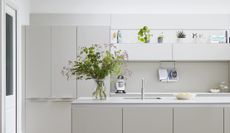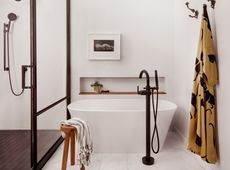Can I use AI to interior design my home? The rise of artificial intelligence design tools, explained
We try a few of the basic tools available and talk to experts about what the future holds for AI in interior design
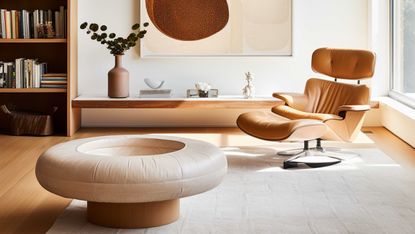

It’s impossible to notice that AI has, seemingly all of a sudden, become a part of our everyday lives, and it’s not without its controversy. The reaction to AI’s emergence in the creative sector particularly seems to split the camp: half viewing it as an opportunity, the other half as a threat.
And it’s not an unfounded concern. We’ve already seen high profile instances where AI design has been used to replace the need for digital artists - Disney using AI for the opening credits of its series Alien Invasion is a big one - but whether these have been as a exploratory idea or a cost-cutting measure it’s not so clear.
It's easy to categorize AI as a replacement for, and a way of undervaluing, creatives in the design industry, but some of the world's biggest studios are reveling in using AI as part of their interior design process.
'AI modelling tools provide interior designers amazing creative freedom and efficiency,' says Juan Sandiego, an interiors consultant who offers a guide for how to use AI as part of your design process on his website Happy Home Clinic. 'With AI, designers and interiors-lovers can instantly visualize spaces and experiment with wild, unconventional ideas that would be unrealistic or difficult to create manually. This removes creative limitations, sparking new inspiration.'

Juan Sandiego is a seasoned Interior Consultant and certified Wellbeing Coach, devoted to uniting design with the science of happiness. As the driving force behind Happy Home Clinic, he empowers home renovators to create spaces that radiate joy and purpose, offering expert advice and personalised consulting services. You can find his guide to designing with generative AI here.
'AI also significantly cuts down on tedious design tasks, freeing up more time for higher-level creative thinking—the fun part,' he adds.
So what can AI do to really help design your home? And is it friend or foe? I aim to find out.
What AI tools are there?
On the most basic level, there are a number of beginner-friendly "visualizers" that can be used to generate AI images of your home. Interior AI is just one example of a user-friendly AI site, which you use by uploading an image of your room, and picking an interior design style. The generator then creates several examples of your room trained on that style.
When using AI generators like Interior AI, there’s a clear uncanniness in the resulting images - in the ‘Interior Design’ lines blur, the furniture rendered can be abstract and freeform, seemingly random architectural details added and, in some instances, the design is based on what’s already in the room, just reworked into something new. I tried it on an image of my bedroom, which has a black-and-white striped bed frame, and those stripes were incorporated in different ways. In the ‘Virtual Staging’ mode, the architecture remains more fixed, and despite the graphics produced feeling somewhat like a surrealist artwork, you can get an idea of different ways to dress your space.

This room was generated by Interior AI based on an image of an existing bedroom and the prompt “Minimalism”

This bedroom was generated with the same reference image, using the prompt “Maximalism”. The stripes on the source image’s existing bed frame have been pulled through for the bed dressing in both instances.
'Of course the tool isn't perfect yet.' Pieter Levels, the founder of Interior AI tells me. 'Generative AI can be quite unpredictable and still produce artefacts in images, like chairs with three legs, but that unpredictability is also what makes it great at coming up with different ideas. In the near future, the AI models will keep improving to get better quality and fewer artefacts. We’re starting to experiment with generating full 3D interiors with a technology called NeRF,' he adds.
This is, of course, not the limit of AI’s capabilities. “AI designers” are using platforms like Midjourney, Stable Diffusion and DALL-E 2 to experiment with creating highly detailed imagery with in-depth references to guide AI in the right direction. That’s not to say that the AI isn’t still taking creative licence here, and the same prompt can yield vastly different results within the same image generation.
'Midjourney is an AI-powered platform that generates highly realistic visuals simply using text prompts,' Juan Sandiego, explains. 'It uses advanced generative AI models trained on millions of images to “imagine” new creations based on your descriptive prompts. Midjourney makes it easy for anyone to bring their creative visions to life, without needing artistic skills. Whether you’re an interior designer or just creatively curious, AI tools like this one offer an incredible tool to visualize your ideas.'
What is prompt-engineering?
I think if you asked the everyday interior designer or architect, AI wouldn’t necessarily be something on their radar at all, let alone something they would say they wanted to use. However, when Zaha Hadid, one of the world’s biggest architecture firms, says that they’re actively using AI in almost all of their projects, you can’t help but take this technology a little more seriously. At a round table event held in April, the studio’s principal Patrick Schumacher explained that: “I'm encouraging everybody who's working on competitions and early ideation to see what comes up, and just to have a larger repertoire.”
This includes using text-to-image AI generators, such as Midjourney or DALL-E, where complex prompts can yield incredibly specific results, compared to the more scattergun approach of simpler AI-image programmes. 'Any of what comes out of this, I claim authorship for it in terms of validating, selecting, elaborating,' Patrick says. 'So I feel very kind of empowered by all this possibility.'
The power that AI offers an interior designer, over an AI-user who isn't so fluent in the 'language' of interior design is through the process of 'prompt engineering' - but what exactly is that?
'Prompt engineering is the art of carefully crafting your text prompts to guide the AI in generating precisely the visual you have in mind Juan explains. 'A well-engineered prompt provides key details that accurately describe your idea. Prompt engineering is crucial for achieving your desired outcome, as the AI relies heavily on your text description. Mastering this craft enables you to consistently create tailored, high-quality images that match your creative vision,' he explains.
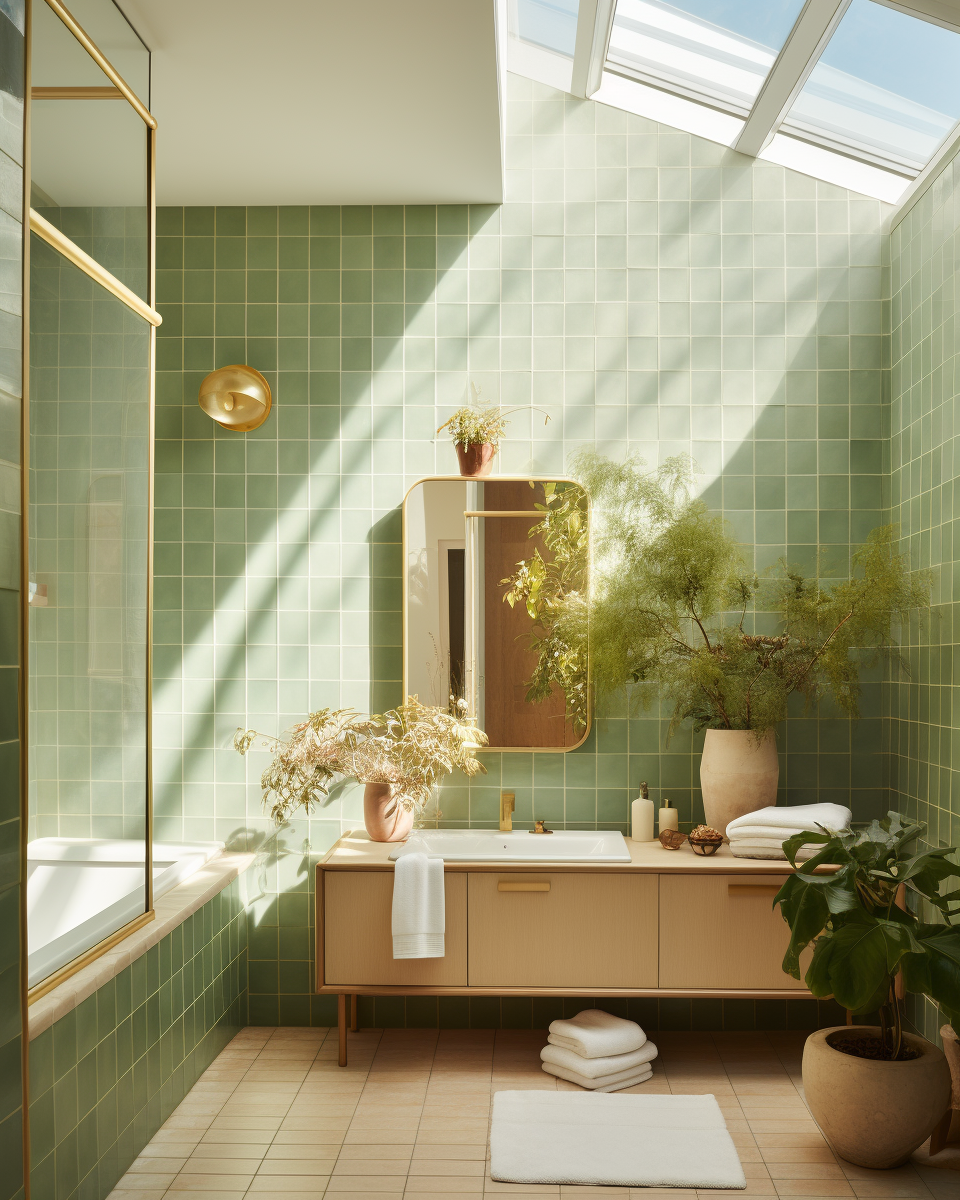
Juan's prompt for this modern bathroom design was: "Professional interior design photograph of a green tiled bathroom with gold accents, wooden sideboard with sink, skylight, soft diffuse morning light, a few plants, vanity mirror, cotton white towels."
Knowing the interior styles or references you want to pull is one thing, but achieving high-quality images relies on understanding how these prompts create visuals, too. 'The secret lies in two essential elements: specifying what you want to see and how you want to see it,' Juan tells me. 'Effective prompts clearly describe the “what” with subject, decor style, lighting, colors, textures, etc. But also provide information on the “how” with perspective, composition and medium.'
Providing plenty of detail is key, but it's a process that can be used to experiment to achieve the desired results. 'Experimentation and multiple iterations may be required to further refine prompts until you find the perfect image,' Juan says.
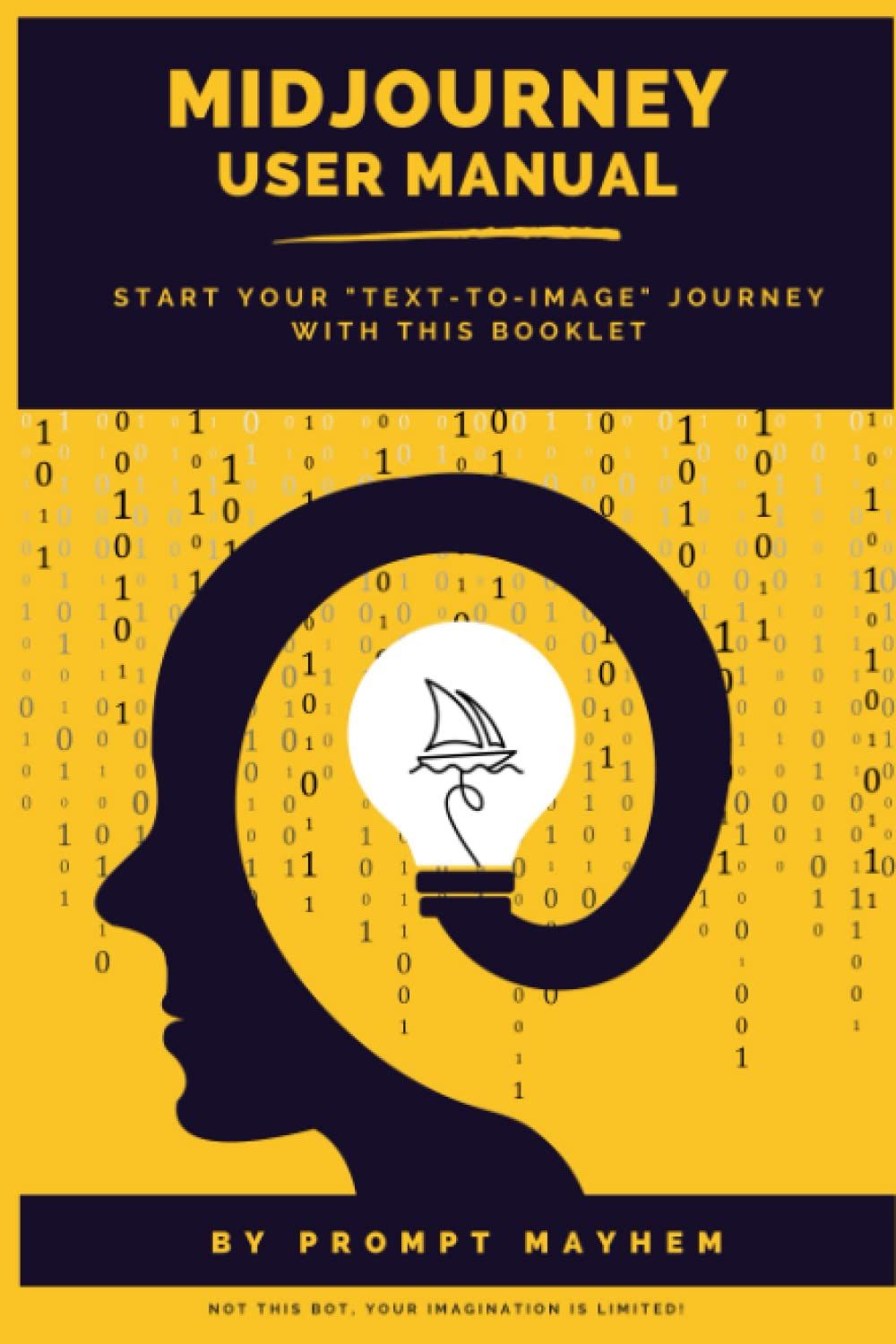
Price: $11
Format: Paperback
Is it ethical to use AI?
In design, whether architecture, product or interiors, AI hasn’t been received with the same pushback as in sectors like digital design and illustration. For example, at this year’s London Design Biennale, a collection of AI-generated, 3D printed decor pieces were displayed, designed without human input by AI “artist” Ai-Da Robot.
It might be that AI isn’t perceived as such a threat to the livelihood of these designers yet, compared to the digital designers and illustrators that have been at the forefront of the culture wars surrounding AI. Graphic artists have found that AI text-to-image generators are pulling their images as references without permission, and that users can ask these programmes to make artworks using their style. All the while, it still remain unclear who the copyright of artwork generated using AI actually belongs to.
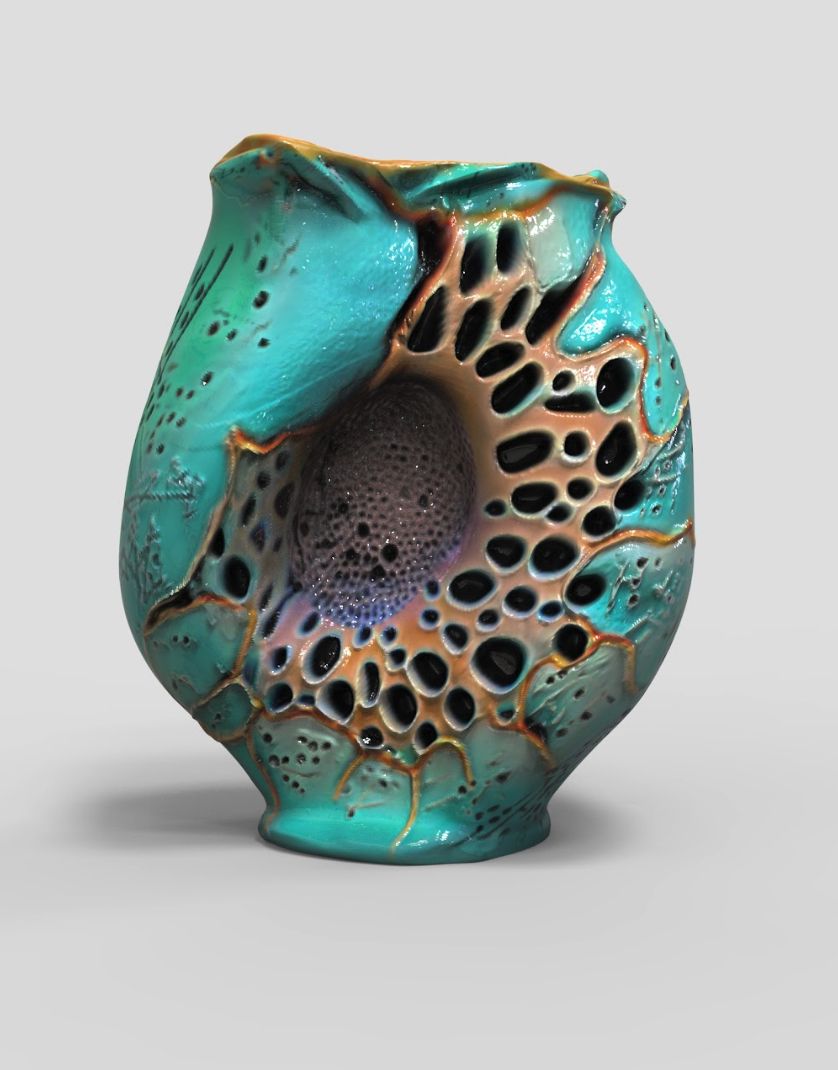
These homewares, displayed as part of London Design Bienniale, were designed by a robot AI ‘artist’.
It's a question I had to levy to Pieter Levels, the founder of Interior AI. 'Interior AI runs on an AI model which is trained on almost 6 billion images,' Pieter explains. 'There is a misconception that generative AI imaging pulls images from elsewhere. Instead, it’s more like we’ve shown it billions of images which it has studied and then started to understand what interior design means including what the different styles are, while mixing it with other disciplines as it’s not just trained on interior, but on any type of photo.'
Before you even consider seriously using AI for interior design, in whatever guise it comes to inhabit, it’s worth considering the moral implications of generative AI, too. Whether you believe that AI does or doesn’t have value as a creative tool is a moot point when it comes to what it means for people in creative industries such as interior design. In a world where the majority of people need to work in order to live their lives, does the ‘efficiency’ of AI and the idea of making design more accessible to all sit at odds with creative workers being able to actually make a living? It’s a question that haunts AI’s use as a tool in creative industries.
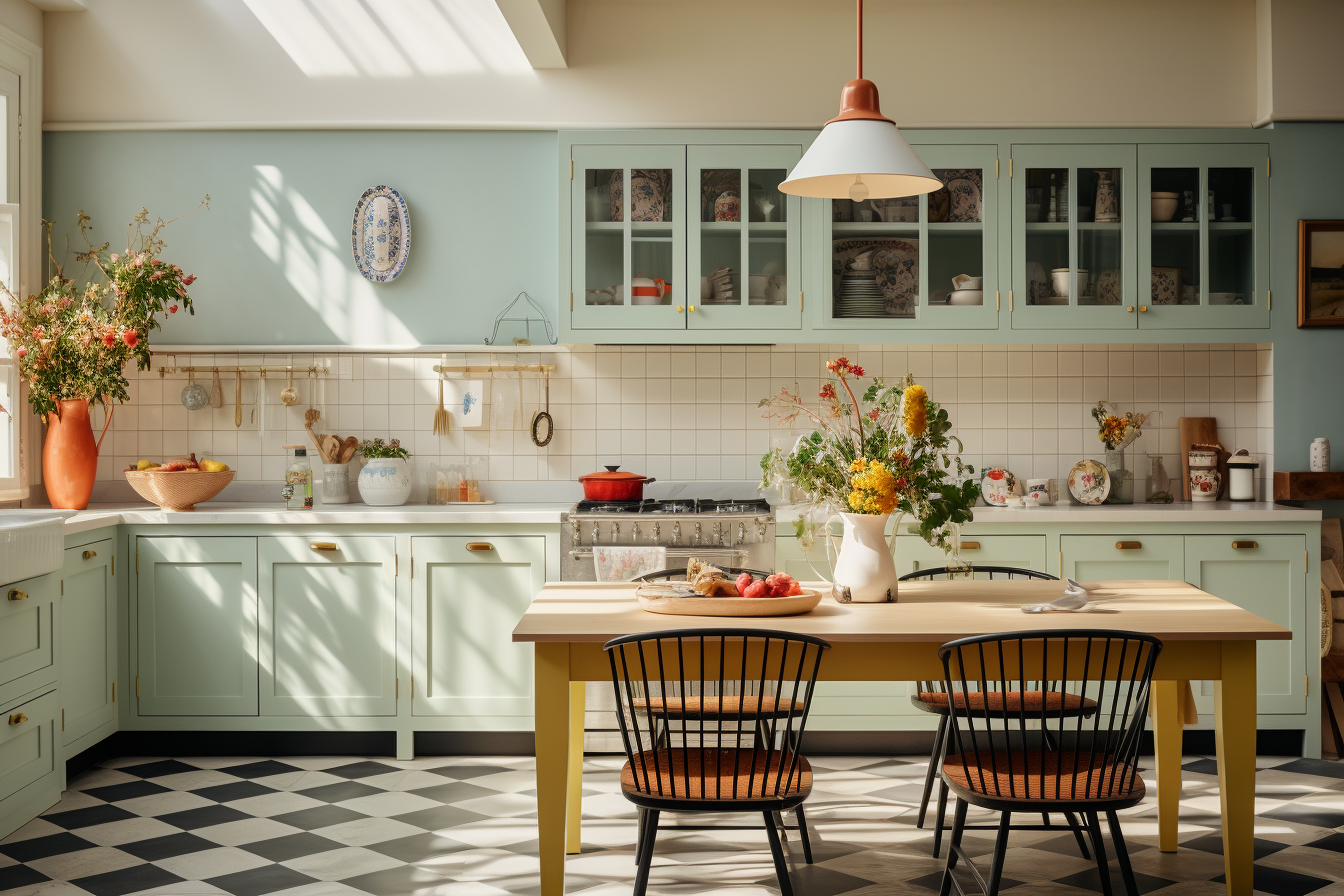
Juan's prompt for this modern kitchen was: "Professional interior design photograph of a medium-sized kitchen in a style that blends English cottage style with Bauhaus, wildflowers, vintage crockery, range cooker, soft mid-morning light."
For interiors experts like Juan, there's a point of difference in AI's use for interior design over something like illustration, however. 'Despite concerns about AI’s impact on creative fields, its role in interior design is different,' he says. 'AI acts as a helper, not a replacement. It speeds up design work and allows experimentation, but the essence of design still comes from human creativity and skills. Designers contribute their expertise, unique methods, and personal touch to create meaningful interiors.'
There are some potential problems with this approach, too. It’s an process that’s inherently referential, for one. Interestingly, nearly all the prompts Zaha Hadid use for their generative AI work contained ‘Zaha Hadid’ in them, drawing on the studio’s signature architectural aesthetic.
If you don’t have a instantaneously recognizable aesthetic in the way that Zaha Hadid does, for example, there’s not shortcut to keeping these ideas cohesive. For a designer or homeowner trying to finetune an aesthetic, or try something new, this provides a problem, too. For designers who want to use AI but rely on references to interior designers they admire, you run the risk of losing the nuance in difference, creating a pastiche to other designers rather than your own unique work.
There’s a chance that using AI will lead designers down a completely different path than traditional methods of design would - whether that’s for better or worse remains to be seen.
How can I use Midjourney for interior design?
If you want to explore generative AI further, start with visualizers like Interior AI before moving onto platforms like Midjourney.
'Midjourney operates through Discord, a community chat platform,' Juan explains. 'You simply join their Discord channel and subscribe to the paid plan you want. There are options like a monthly basic plan for casual users, up to advanced plans with more features and generation time for professionals. You then interact through text prompts in your own private Discord server. As Discord has a mobile app, it’s a convenient way to unlock Midjourney's capabilities from anywhere.'
Be The First To Know
The Livingetc newsletter is your shortcut to the now and the next in home design. Subscribe today to receive a stunning free 200-page book of the best homes from around the world.

Hugh is the Editor of Livingetc.com. From working on a number of home, design and property publications and websites, including Grand Designs, ICON and specialist kitchen and bathroom magazines, Hugh has developed a passion for modern architecture, impactful interiors and green homes. Whether moonlighting as an interior decorator for private clients or renovating the Victorian terrace in Essex where he lives (DIYing as much of the work as possible), you’ll find that Hugh has an overarching fondness for luxurious minimalism, abstract shapes and all things beige. He’s just finished a kitchen and garden renovation, and has eyes set on a bathroom makeover for 2024.
-
 Things People With Low Maintenance Kitchens Never Have — 5 Decisions To Stay Away From
Things People With Low Maintenance Kitchens Never Have — 5 Decisions To Stay Away FromYou may be aiming for a low-maintenance kitchen that is easy to work in but have you chosen the right materials for it? Designers point out the most common errors in decisions
By Aditi Sharma Maheshwari Published
-
 People With Spa Bathrooms Will Likely Have These 8 Things — Get the Look With Our Checklist
People With Spa Bathrooms Will Likely Have These 8 Things — Get the Look With Our ChecklistHomeowners with spa-like bathrooms typically have these seven things, how many do you have?
By Oonagh Turner Published
